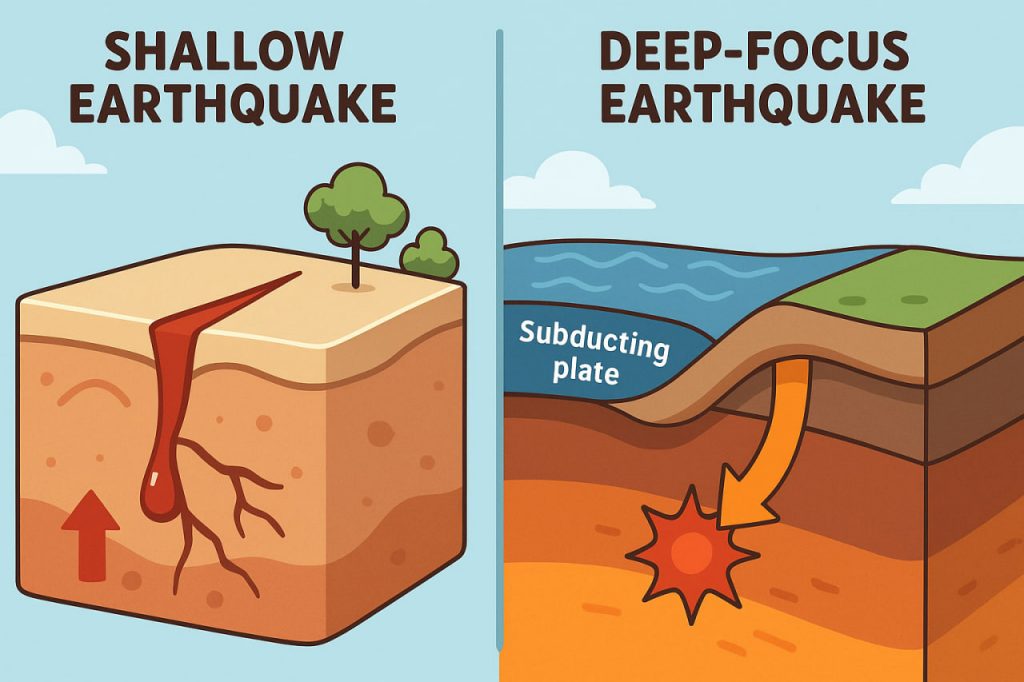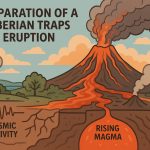Earthquakes are sudden releases of energy in the Earth’s crust or mantle, producing seismic waves. Most earthquakes occur at relatively shallow depths, but some originate much deeper within the Earth. These are known as deep-focus earthquakes, and they play a unique role in understanding tectonic activity and the structure of our planet.
Definition of Deep-Focus Earthquakes
Deep-focus earthquakes are seismic events that occur at depths between 300 and 700 kilometers (186–435 miles) below the Earth’s surface. They are typically associated with subduction zones, where one tectonic plate is forced beneath another into the mantle.
How They Differ from Shallow Earthquakes
- Depth of origin:
- Shallow-focus earthquakes: 0–70 km deep (the most common and destructive).
- Intermediate-focus earthquakes: 70–300 km deep.
- Deep-focus earthquakes: 300–700 km deep.
- Energy release:
Deep earthquakes release immense energy, but because of their great depth, much of it dissipates before reaching the surface. - Surface impact:
Shallow earthquakes usually cause the most destruction since their energy travels a shorter distance. Deep-focus earthquakes are less damaging on the surface, but they can be felt over much larger areas. - Location:
Shallow quakes can occur anywhere along faults, but deep-focus ones are restricted to subduction zones, such as around the Pacific “Ring of Fire.”
Why Deep-Focus Earthquakes Occur
Scientists still debate how rocks remain brittle enough to fracture at such depths, since pressure and temperature usually make them behave plastically. Possible explanations include:
- Mineral phase changes (e.g., olivine transforming into spinel).
- Dehydration reactions releasing fluids that weaken rocks.
- Extreme stress accumulation within sinking tectonic plates.
Examples of Deep-Focus Earthquakes
- The 1963 Sea of Japan earthquake (depth ~600 km).
- The 2013 Okhotsk Sea earthquake (depth ~609 km), one of the deepest ever recorded, felt thousands of kilometers away.
Conclusion
Deep-focus earthquakes are unique seismic events that occur far beneath the Earth’s surface. Unlike shallow quakes, they rarely cause catastrophic damage, but they provide essential insights into plate tectonics, mantle processes, and the Earth’s internal structure. Their existence challenges our understanding of how rocks break under extreme pressure and temperature.
Glossary
- Subduction zone – an area where one tectonic plate sinks beneath another.
- Seismic waves – vibrations that travel through the Earth during an earthquake.
- Olivine – a common mantle mineral that may transform under high pressure.
- Phase change – a transformation in a mineral’s structure under pressure or heat.
- Ring of Fire – a tectonically active zone surrounding the Pacific Ocean.


